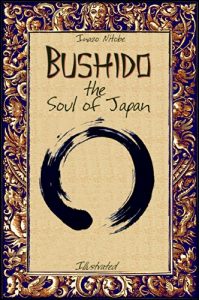This book nowadays is in the public domain, but a great work has been done by Publisher to this version to make an electronic book that contrasts favourably to the original version. A lot of errors that exist in the free versions have been corrected; proper navigation is available or shortly, the ASCII text has been converted into a proper e-book. And the most important, in addition were added 52 illustrations that help us to see how the History comes to Life.
By the end of the 12th century, samurai became almost entirely synonymous with bushi, and the word was closely associated with the middle and upper echelons of the warrior class. The samurai followed a set of rules that came to be known as Bushido. Their teachings can still be found today in both everyday life and in modern Japanese martial arts. The philosophies of Buddhism and Zen, and to a lesser extent Confucianism and Shinto, influenced the samurai culture. Zen meditation became an important teaching due to it offering a process to calm one's mind. The Buddhist concept of reincarnation and rebirth led samurai to abandon torture and needless killing, while some samurai even gave up violence altogether and became Buddhist monks after realizing how fruitless their killings were. Some were killed as they came to terms with these realizations in the battlefield. The most defining role that Confucianism played in samurai philosophy was to stress the importance of the lord-retainer relationship—the loyalty that a samurai was required to show his lord. Samurai warriors described themselves as followers of "The Way of the Warrior" or Bushido. Bushido is defined by the Japanese dictionary Shogakukan Kokugo Daijiten as "a unique philosophy (ronri) that spread through the warrior class from the Muromachi (chusei) period. From the earliest times, the Samurai felt that the path of the warrior was one of honor, emphasizing duty to one's master, and loyalty unto death". Most samurai were bound by a code of honor and were expected to set an example for those below them. A notable part of their code is sepuku or hara kiri, which allowed a disgraced samurai to regain his honor by passing into death, where samurai were still beholden to social rules.
By the end of the 12th century, samurai became almost entirely synonymous with bushi, and the word was closely associated with the middle and upper echelons of the warrior class. The samurai followed a set of rules that came to be known as Bushido. Their teachings can still be found today in both everyday life and in modern Japanese martial arts. The philosophies of Buddhism and Zen, and to a lesser extent Confucianism and Shinto, influenced the samurai culture. Zen meditation became an important teaching due to it offering a process to calm one's mind. The Buddhist concept of reincarnation and rebirth led samurai to abandon torture and needless killing, while some samurai even gave up violence altogether and became Buddhist monks after realizing how fruitless their killings were. Some were killed as they came to terms with these realizations in the battlefield. The most defining role that Confucianism played in samurai philosophy was to stress the importance of the lord-retainer relationship—the loyalty that a samurai was required to show his lord. Samurai warriors described themselves as followers of "The Way of the Warrior" or Bushido. Bushido is defined by the Japanese dictionary Shogakukan Kokugo Daijiten as "a unique philosophy (ronri) that spread through the warrior class from the Muromachi (chusei) period. From the earliest times, the Samurai felt that the path of the warrior was one of honor, emphasizing duty to one's master, and loyalty unto death". Most samurai were bound by a code of honor and were expected to set an example for those below them. A notable part of their code is sepuku or hara kiri, which allowed a disgraced samurai to regain his honor by passing into death, where samurai were still beholden to social rules.






